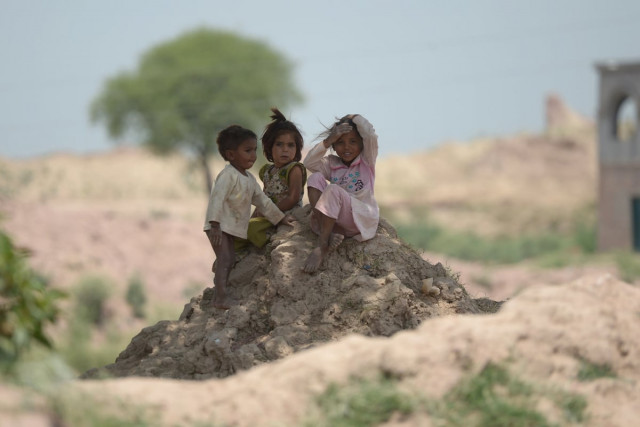State of children 2014: Militancy blights lives of thousands of students
Report says schools used as long-term shelters for the IDPs also damaged

Report says schools used as long-term shelters for the IDPs also damaged. PHOTO: AFP
Tens of thousands of students in Khyber-Pakhtunkhwa (K-P) and Federally Administered Tribal Areas were forced to put their studies on hold following their families’ displacement owing to militant violence, military operations or floods.
According to The State of Children in Pakistan 2014 report, schools used as long-term shelters for the internally displaced persons (IDPs) from Federally Administered Tribal Areas (Fata) have also become damaged, casting a shadow on inadequate educational infrastructure.

The report, second such study on the status of children in Pakistan, has recently been launched by the Office of National Commissioner of Children, Islamabad and Unicef.
Read: 132 children killed in Peshawar school attack
The study on the challenges faced by the educational institutions in the K-P said: “Many poor householders, faced with the loss of livelihoods, have taken their children out of school so they can contribute to the family’s income.”
The authorities had accommodated the IDPs from North Waziristan Agency in government schools of Bannu , Karak and Lakki Marwat districts after the military operation was launched against militants on June 15, 2014.
According to United Nations Office for the Coordination of Humanitarian Affairs (OCHA) situation report No 7, the total number of schools used as shelter by the IDPs was 1,404. Of these, 80 per cent of the schools (1,131) were in Bannu. Around 75 per cent of them were primary schools and 46 per cent were girls’ schools.
Resumption of education was difficult in the schools (where the IDPs were accommodated) after summer holidays because affected families did not want to leave schools as they did not have proper arrangements for alternative shelters while the schools had facilities, including drinking water, electricity and latrines etc.
Read: Promises: ‘Govt committed to facilitating IDPs’
As a result, thousands of children were unable to get education due to prolonged stay of the IDPs while the school infrastructure was also damaged. As of October 2014, the government reported that schools were re-opened as the IDPs vacated nearly 940 of more than 1,000 schools that were occupied across Bannu, Karak and Lakki Marwat.
Families occupying schools had moved to host families, some unused schools and to Baka Khel camp.
Proximity with schools
Proximity to schools has been identified as a key determinant of primary school enrolment and retention in the K-P. Children are less likely to attend schools if they live far away from schools.
In K-P, approximately 80 per cent of students have to walk for around 14 minutes to reach to a primary school. Likewise, almost 60 per cent of students have to walk for around 14 minutes to reach a middle school and 45 per cent of students have to walk for 14 minutes to reach a high school.
Read: Militants blow up another school in Bajaur Agency
The time for girls is likely to be higher, again because of the relatively smaller number of girls’ schools.
Published in The Express Tribune, July 6th, 2015.













COMMENTS
Comments are moderated and generally will be posted if they are on-topic and not abusive.
For more information, please see our Comments FAQ